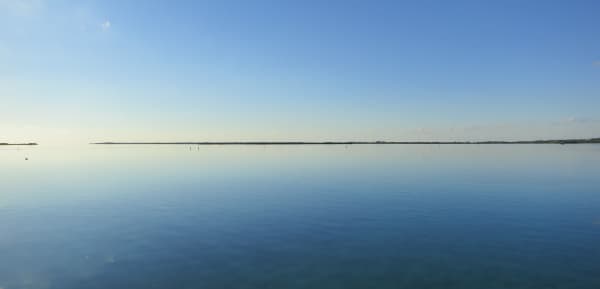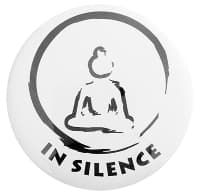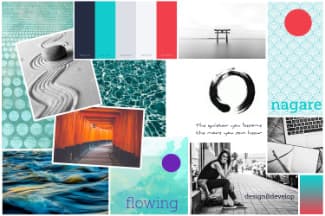In Pursuit of Silence
When was the last time you have enjoyed true silence?
No words, no noise, no vehicles, no sound… just listening to your own breathing. Quietly.
While writing down this sentence, I immediately feel more spacious and calm. Even though I am sitting in a noisy coffee shop beside a busy road.
As a seasoned meditator Silence has become an integral part of my life. Over the years I explored many different forms of silent spaces — sometimes in the middle of a noisy marketplace and sometimes in total solitude in nature or with others during a retreat.
To be still in body and mind needs regular practice.

Psst! Silence: A Great Collaborator
One of my long-standing interests is the effect of Silence on collaborative teams. Specifically the aspect of role affirmation by different personalities who work together on creative solutions and its impact on the product.
Working within a well-established team leads to well-established speaking roles. Usually, the more extrovert team members do most of the talking. The quieter members of the team stay in the background and with them stay their ideas and opinions.
When we are striving for more diverse teams and demand diverse thinking, we need to make sure that all these different voices are heard. We need to create an atmosphere where all type of minds feel invited and have the space to share their thoughts.
The challenge is finding a balance between collaboration and contemplation within a team.
Silence is not the absence of something, but the presence of everything.
On my quest for deeper understanding, I decide to offer a workshop at UX Bristol to further explore ways of silent collaboration.
My aim is to create a quiet space at a noisy conference where participants can experience Silence while working together on a given task.
The workshop is based on 'The Silence Experiment' which is part of the Inclusive Collaboration movement, developed by Dr. Sallyann Freudenberg and Katherine Kirk. Read their inspiring book!.
At one of my past workplaces, we had a dedicated meditation room in the office. It was a big empty room with wooden floors and a pile of meditation cushions. There was a daily meditation schedule open to all employees. The rest of the time you could go there and sit quietly or dance wildly.
I was leading product development at the time and our team meditated together regularly. We also experimented with Silence throughout our workday - establishing quiet hours, wearing 'In Silence' badges.
Quiet time and contemplative spaces in work environments are a vital part of the creative process. They not only promote personal well-being, but they also contribute to team productivity.
It is surprising how deep a bond between humans is formed in Silence.
The Workshop

The session set out to facilitate an experience of the quiet aspects of collaboration.
Preparation
I put 'Silence' posters on all the walls in the room. The door gets a 'Please enter in Silence' sign. All tables have pens, post-it notes, prompts, written instructions and a wrapped box with a couple of screwdrivers.
In the box is a RoboKit to be built by each team. I also set up a table with glitter, paints, stickers, pipe cleaners and other creative material for customising the prototype once it is ready.
Introduction (5 minutes)
The participants enter the room in Silence. Everybody receives an 'In Silence' badge as a reminder which they pin visibly to their clothes.
I welcome everybody to the silent space and ask them not to speak. Instead, they will consciously become aware of all the moments they want to say something.
What do they want to say? What is the purpose of it at that very moment?
All these intentions will be written down on post-it notes. The notes will not be shown to anybody else and put aside. I also encourage everybody to write down any thoughts and feelings connected to the process.
There are 3 teams of 4 and 1 team of 3 people. I activate the timer visible on the screen and off we go.
Silence (35 minutes)
The task: The building of a prototype in a team of up to 4 people (written instructions) and writing post-it notes about the experience (questions were given)
All teams unpack their box and start working. It is amazing to see everybody collaborating in total Silence — not a word is spoken. People look at each other and observe. Hand signals are common. Everybody is attentive and present.
We can hear noises from other rooms — laughter, people talking, furniture moving, clinking of cups. In its own way, this contributes to the depth of the Silence felt in the room.
There is a calmness around — almost tangible. I am happy to be a part of it and holding the space.
Everybody is involved in the process, sometimes more active, sometimes watching others doing things or writing down personal notes.
The only noise is the humming of the robot's motor once it is built and starts to walk around on the table.
A wave of quiet joy spreads through the room.
Every team finishes their robot in the time given and all models look colourful and wonderfully weird. People walk around the tables and look at the results.
Silence is observed throughout the session.
Contemplation (5 minutes)
> contemplating and sorting notes
Once finished everybody has time for a moment of gathering and letting it all sink in.
Reflection (10 minutes)
> reviewing notes and sharing insights (plenum)
I break the Silence to start the reflection. I am hesitant before I speak — it feels somehow cruel to cut through the quiet.
Everybody is reviewing their notes now. They are dividing their post-its into different piles: - things they wanted to say and now these are obsolete - things they wanted to say and there is still a need to say it- thoughts and feelings throughout the process
Astonishing for all is that most things didn't need to be said. Even though they seemed important at the time, looking at them now reveals that they did nothing to move the process along.
Quieter people share that they were much more engaged and contributed more to the process than they usually do.
A more extroverted person reflects that the Silence helped them to realise how 'loud' they usually are.
Several people share that they took on tasks they enjoyed —tasks they wouldn't normally take on because of their own judgement or team roles.
Some people felt that they should take charge but realised they couldn't claim their leadership without words.
Everybody became more fearless to contribute during the course of the build - feeling empowered by the Silence.
After the session people feel rejuvenated and energised.
Collection (10 minutes)
On a flip chart, we collect answers to:
I was surprised that there was…
no need to say most things; no need for polite chit-chat; no need to apologise; a conscious role awareness supported by silence; more empathy; so much space and trust; no hierarchy; fluent roles; mutual respect.
It was different because…
respectful; focused; mentally refreshing; openness to observe others; space for self-observation; quiet people didn't back out; everybody was involved; nobody asked for permission; less ego.
The most valuable insight today: Silence is…
enjoyable; peaceful; low stress, high empathy; not a problem; can make you more decisive/confident in your actions; not as hard as I imagined; a relief; getting to know yourself better.
A change in my way of collaborating tomorrow might be…
We don't have time for that :(
The End
I wish I had more time for summarising the experiences. The next workshop will be extended to create more space for each stage.
There is so much learning in the sharings of everybody. The atmosphere is open and friendly. All people are involved and contribute to the conversation.
A feeling of connectedness is in the room.
Most of the participants approach me throughout the rest of the day. Some want to talk a bit more about their experience and some just want to say thank you for the Silence we shared.
If you read this and you have been to the workshop — thank you for coming, you made a difference! And a big thank you UX Bristol for having me.
If you have any question, comment and/or are interested to introduce more Silence into your work space, feel free to get in touch.
Silence offers profound healing and deep connection.
More Food for Thought
- The Inclusive Collaboration Experiments, by Dr. Sallyann Freudenberg and Katherine Kirk
- Running the Silence Experiment using Lego, by Bruce Scharlau
- Time, by Ollie Campbell
- This is Your Brain on Silence, by Daniel A. Gross
- Quiet by Pablo Neruda, read by Sylvia Boorstein
- post from Catherine Hedler | Participant UX Scotland 2019



